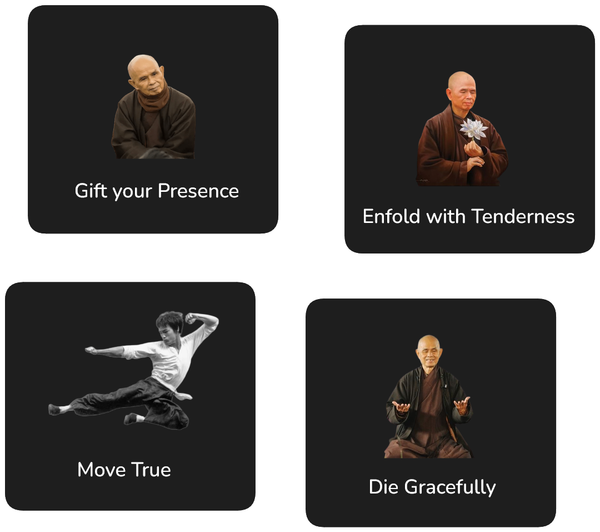Memory Technique for Remembering Non-fiction Books
5 step technique for remembering key concepts of non-fiction books.

I've spent years looking into different ways to improve memory. My adventures have included trying out all manner of techniques such as the loci technique.
A while ago, I decided to try something new. Instead of sticking to well-known memory aids, I aimed for a simpler, more creative approach. This new method wasn't just about learning to remember better. It was about making the whole process more fun and less of a chore.
Now, I'm experimenting with a new technique. I read a chapter of a non-fiction book, memorise it, and then recite it. Then I use OpenAI Whisper API to transcribe what I say and ChatGPT to edit the transcript.
In this article, I'll go into detail about this method. It involves going through the following steps for every chapter of the non-fiction book:
- Setting the Scene: Creating an imaginary scene that resonates with the theme of the chapter.
- Making Vivid Images: Creating vivid, mental images representing key concepts and ideas from the chapter.
- Use Location: Place created images in specific locations within the scene systematically.
- Tell Stories: Link images through engaging stories.
- Make AI Your Assistant: Record what you have remembered and let AI help you put it all in good shape.
I will describe each of these steps in more detail in the following.
Setting the Scene
Defining a location to set the scene is our first step. It's simple but powerful. Imagine associating each book chapter with a unique location. This creates a vivid scene that reflects the chapter's main idea.
For example, picture a chapter about courage set in a medieval castle filled with brave knights. It's not just about picking any scene; it’s about selecting one that deeply connects with the chapter's theme.
How do we choose the right scene? Don’t rush it. I recommend reading a few pages of the chapter first. This way, you get a better sense of its core message. This insight helps pick imagery that’s not just fitting but also personally impactful.
Ensure to use positive imaginary. For instance, for a chapter on fears, avoid scenes that evoke apprehension. Instead, choose settings that put a positive spin on the subject. This builds an emotional link, making it easier to understand and remember the chapter.
By tying each chapter to a positive location, we're creating a mental and emotional landscape that reflects the material's depth. This not only helps with memorisation but also makes it easier to apply what we've learned to our lives.

Making Vivid Images
Creating vivid images helps us remember more effectively, especially when we're trying to keep track of important ideas from a book. For each critical concept, imagine a striking and relevant image. Think of something easy to picture, like a knight or a fruit stand. These shouldn't be just random choices. They should be carefully picked to help anchor the idea in our minds.
The effectiveness of these images hinges on their vividness. They should be bold, large, colourful, and maybe even a little over-the-top. Boring images fade fast, but lively and unique ones stick in our memory.
So, when reading a non-fiction book, always ask yourself: What images best capture the information? Choose images that are positive and resonate with you. This not only makes remembering more fun but also strengthens the connection in your mind.
This technique, while straightforward, does require creativity and imagination. Its beauty comes from how adaptable it is, letting us personalise our mnemonic devices. This makes memorising not only more efficient but also uniquely tailored to us.
Use Location
Place the mnemonic images in a scene or location you associate with the chapter. Organise them in a way that makes sense to you, such as left to right or from the outside in. This approach helps you remember and also takes advantage of how we naturally understand space, making the memory more interactive.
After we set the scene, we should give each of the items visualised as objects/memory images a specific place within the scene. There are numerous ways to do this:
- Imagine yourself stepping into the scene and then arrange objects/images from left to right
- Imagine yourself stepping into the scene and then arrange objects/images as stops of a journey deeper into the scene
- Arrange the objects/images in a grid
This approach uses our strong sense of location and space. We often don't tap into this aspect of our imagination fully. That’s where the loci method shines. By giving each memory a specific place, we boost our ability to remember it. Whether it's moving in a straight line or going deeper into a scene, these strategies help us anchor memories more firmly through spatial association.
Tell Stories
Linking images within a physical space is a known way to boost memory. But sometimes, this isn't enough for strong memorisation. I've discovered that telling stories can make remembering even easier.
Consider a knight in full armour and a fruit stand. Placing them together in a space creates a basic connection. Now, imagine the knight charging at the fruit stand. Fruits fly everywhere, covering his shiny armour. This funny and vivid scene creates a story that helps you remember both the knight and the fruit stand.
Using stories to connect images improves memory. The story doesn't need to be complex, just engaging. Turning static pictures into dynamic stories uses the brain's love for narrative. This makes the information easier to remember and recall. So, when you're linking images in your mind, craft a simple story. The more imaginative and vivid, the better your memory will be.
Make AI Your Assistant
After I have memorised a chapter using the steps above, I recite what I remember from memory. This is not limited to the specific images, but I talk about anything I remember and find noteworthy.
I record what I say and then have it transcribed by the OpenAI Whisper API, which I found very effective in transcribing what I say.
Then I use a GPT model to clean up and edit the transcript. The prompt I used below:
You are given the transcription of a recorded audio log.
Clean up the following text, removing “uh” and “uhm” and repeated words and ideas. I will paste parts a text for you to correct. You will add appropriate capital letters, periods, commas, question marks where necessary and other punctuation marks needed. You will remove all the filler words. You will make the structure of sentences more clear if needed. You will proofread the text and correct the misspellings. You will make the text sound like a written one, not an oral conversation. But otherwise use as much of the original text as possible. Strictly base your notes on the provided text, without adding any external information.
Break the text up into paragraphs to increase readability. Always seperate paragraphs by two new lines.
Terms I frequently use:
[Add terms/names here you frequently use and that are often transcribed incorrectly]
Change terms that are similar to the terms and could have been transcribed incorrectly to the terms above.
Respond in British English spelling only.
Here is the text:
I then also let GPT figure out a title and tags for the recording and store it all in Notion. This is all done using an N8N workflow.

Conclusion
I've been trying a new memory routine for about two months now. I'm happy with the progress. I can remember the contents of chapters much better than before. It's encouraging, but I'm still experimenting.
Like anything, this method requires lots of practice. I aim to get faster and more efficient with creating and recalling images over time.
I will continue my experiments and provide an update here how I am going!





